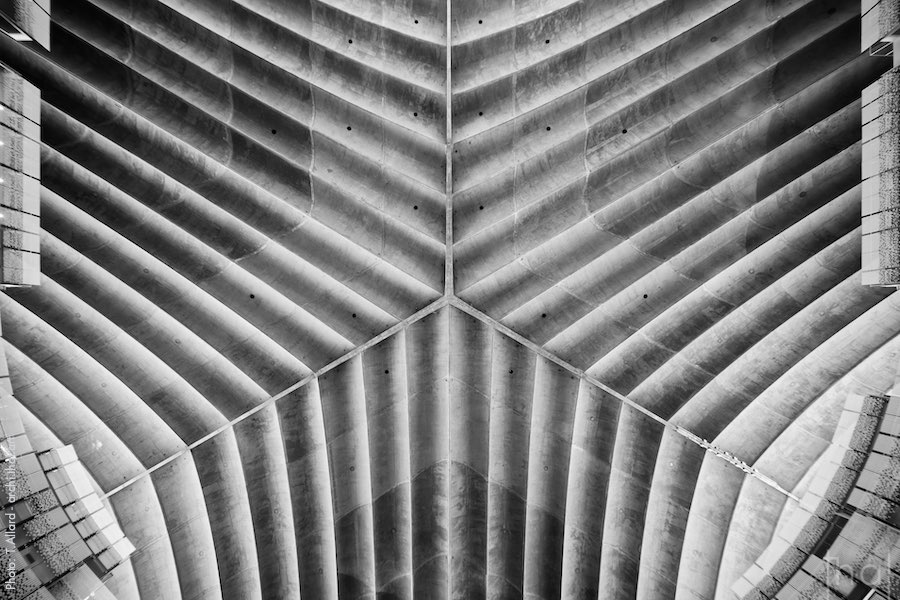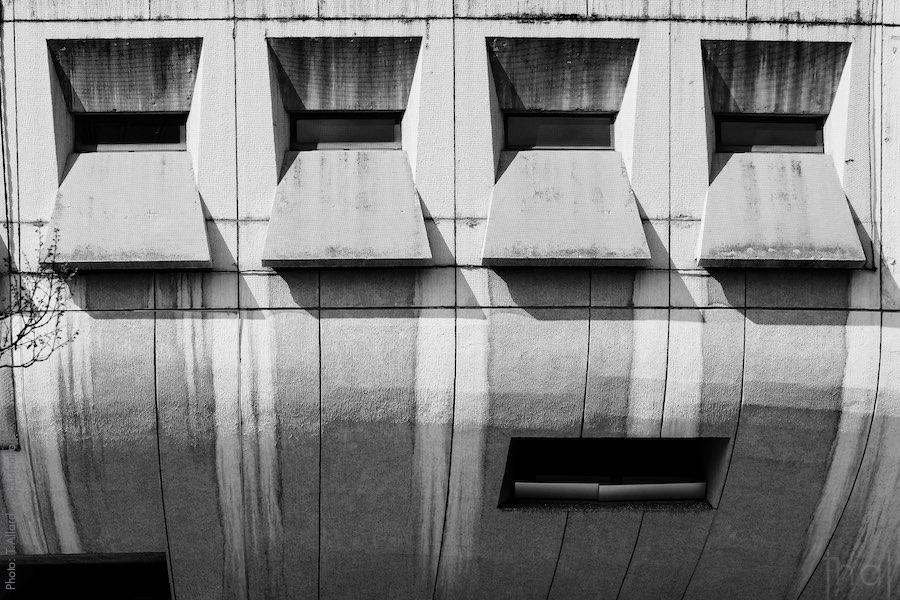The brutalist CNIT building at Paris La Défense
In Paris La Défense, the CNIT building with its impressive concrete vault has been enclosed since the 1970s in a concrete slab district.
Read moreArchitecture photographer's blog
Photographic reports on heritage architecture
Urban planning on slabs is a form of urban planning that emerged in the 1960s and 1970s and which consisted of separating pedestrian paths from motorized traffic on several layers.
– Underground levels hosting subway, public transport and other services.
– Level 0 corresponding to the natural ground which is connected to the streets and therefore accessible to cars, buses, cabs, delivery vehicles, etc.
– A raised level consisting of a concrete slab for pedestrian use. It constitutes the first floor of all buildings and can also accommodate all the usual urban amenities and furniture.
France is one of the countries in the world where this type of urban planning has been implemented the most, mainly in the largest cities such as Paris and its suburbs, Lyon, Bordeaux, Montpellier, Grenoble, or Toulouse.
Originally presented as an ideal urbanism, the slab took its meaning at the scale of a district and prefigured a utopian world where the pedestrian would be king and away from the nuisances of the city.
But as time went by, the districts on slabs have for the most part not aged well. They turned out to be quite often dysfunctional because of the difficulties of access and the number of additional spaces to manage.
Poorly maintained by the city councils and a little too adapted to all kinds of traffic, they have also become very desertified.
In the end, these neighborhoods have become less and less attractive and isolated from the rest of the city.
Find my reports in connection with the urbanism on slabs in France:

In Paris La Défense, the CNIT building with its impressive concrete vault has been enclosed since the 1970s in a concrete slab district.
Read more
In Lyon, France, architect Henri Pottier designed an auditorium in a brutalist concrete shell with a bunkerized look.
Read more
Bordeaux is not known for its brutalist architecture, except for the old bank in the Mériadeck district and maybe the future “Kanelé”…
Read more
Discovering a few examples of brutalist architecture in the La Défense district of Paris, France.
Read more